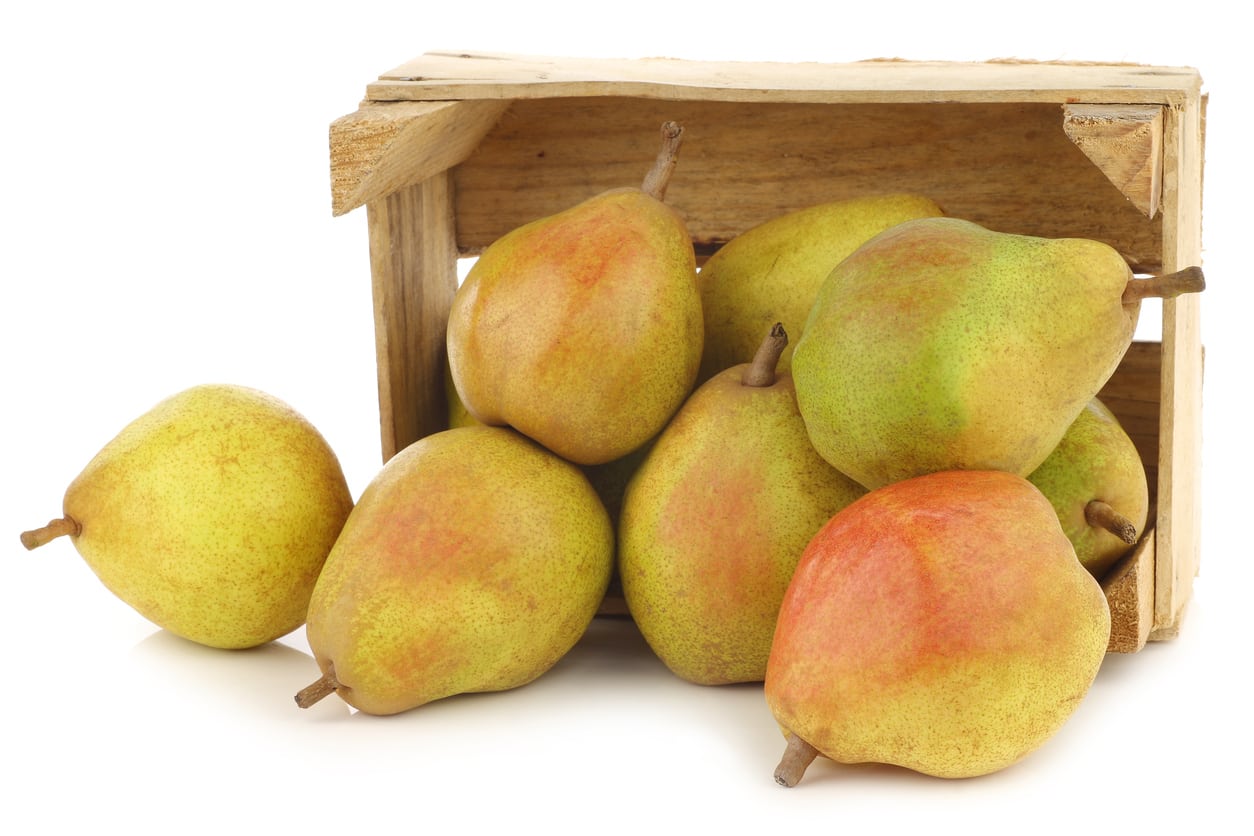What Are Comice Pears: Learn About Comice Pear Tree Care


What are Comice pears? They are the “lookers” of the pear varieties. There are the gorgeous, succulent fruits used in gift boxes at Christmas time, which earned them the nickname “Christmas Pear.” If you are thinking of growing your own Christmas pears by planting Comice pear trees in your backyard, you’ll want information about this popular fruit. Read on for information about growing Comice pears as well as tips on Comice pear tree care.
What are Comice Pears?
Comice pear fruit (pronounced ko-MEESE) has a distinctive shape that sets them apart from other pear varieties. Their bodies are plump and rounded, while the necks on these pears are stubby but well-defined. The fruits of Comice pear trees are usually green, but often have a red blush over parts of the skin. A few strains are entirely red, including many of the newer varieties. Originally cultivated in France as “Doyenne du Comice” pears, Comice pear fruit are delicious, with a rich, sweet, mellow flavor and a creamy texture. They are succulent and juicy, a true pleasure to eat.
Growing Comice Pear Trees
Luscious Comise fruit, arguably the most delicious pears available, don’t just have to be enjoyed at Christmastime as gifts. Growing Comice pears is also an option so you can have them right at your fingertips every year. That said, don’t start planting the pear tree unless you live in U.S. Department of Agriculture plant hardiness zones 5 through 9. That means that gardeners in hot or cold climates should look elsewhere for another appropriate fruit tree. Comise pear trees grow to 18 feet (6 m.) tall and wide and should be planted at least that far apart. The fruit trees also require a full sun location.
Comice Pear Tree Care
Regular irrigation during the growing season is an important part of Comice pear tree care. Although the trees are fairly resistant to drought, you’ll want to water to get better tasting fruit. Growing Comice pear trees is fairly easy, and the trees don’t require much in the way of additional maintenance if appropriately planted. You’ll need some patience, however. You’ll have to wait three to five years after planting for the tree to produce fruit.
Sign up for the Gardening Know How newsletter today and receive a free copy of our e-book "How to Grow Delicious Tomatoes".

Teo Spengler is a master gardener and a docent at the San Francisco Botanical Garden, where she hosts public tours. She has studied horticulture and written about nature, trees, plants, and gardening for more than two decades, following a career as an attorney and legal writer. Her extended family includes some 30 houseplants and hundreds of outdoor plants, including 250 trees, which are her main passion. Spengler currently splits her life between San Francisco and the French Basque Country, though she was raised in Alaska, giving her experience of gardening in a range of climates.